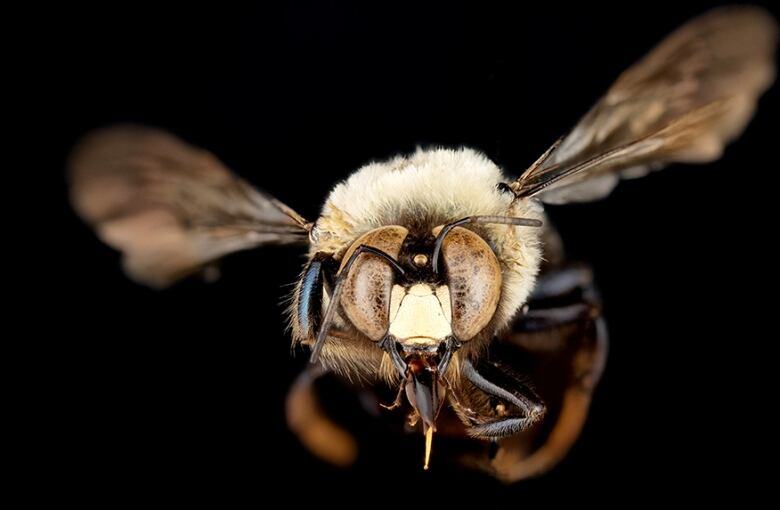University of Calgary unveils digital archive of 300 bee species
Digital technology used to create unique online collection

May 20 is World Bee Day, and thanks to a new digital collection of images featuring species native to Alberta, things may be looking up for the beleaguered flying insect.
Worldwide, bee populations have been on the decline since the 1990s.
The archive is seen as a valuable new resource to help study endangered species and develop healthier environments for bees.
The collection was created to increase understanding of the beneficial insects, says University of Calgary associate professor Paul Galpern, because it helps promote conservation, both in city and rural landscapes.
"Bees are beautiful," Galpern said in a Friday interview with The Homestretch. "They're more than that yellow-and-black comic cartoon that we're used to seeing.
"Bees are so many colours. There are some that are blue. There are some that are orange. There are some that are black and yellow, and some that have all these colours in the same bee."
Most of the bees in the online archive were collected by Galpern's research group, which, since 2015, has expanded the university's physical bee collection to more than 100,000 specimens.
That makes it one of the largest collections in Canada.

"We've been engaged in collecting a lot of bees across Alberta for the past five years. The University of Calgary also has a really great collection, and what we wanted to do is show the world just how amazing bees are, how many different colours and shapes they have," said Galpern.
Galpern said it's important to share the collection because bees are in trouble — and they play an important role in the planetary ecosystem.
"We've got these great, high-resolution pictures of these bees that help researchers all across the world to see what these bees look like, to understand the different parts of their bodies and compare the different bees from different parts of the world.
"We're interested in figuring out how many are left, where they are, what types, what species they are — and how we can help them."

Vegetarian
If you're confused about how to distinguish between a wasp and a bee, Galpern says it helps to think in terms of carnivores and vegetarians.
"Think of a bee like a vegetarian wasp," he said. "It has many of the characteristics of a wasp, but it's different in that it's not interested in meat.
"It's not interested in flying away with a bit of your barbecue," he said. "It's much more interested in visiting flowers to get two things it wants to get: nectar, which is that sweet stuff in flowers, and it wants to get pollen, which it brings back to a nest … to help rear its babies."

World Bee Day
Galpern said the significance of having a day dedicated to bees shouldn't be underestimated.
"World Bee Day is coming up on Monday," he said, "and it's time to really remember just how important bees are for really everything out there.
"The world is green, and it's green in part because there are flowering plants, and flowering plants — about 90 per cent of them — are dependent on having bees and other pollinators visit them so they can make seeds and reproduce.
"We've got to thank bees a lot for what's great about our world."



With files from CBC News and The Homestretch.

